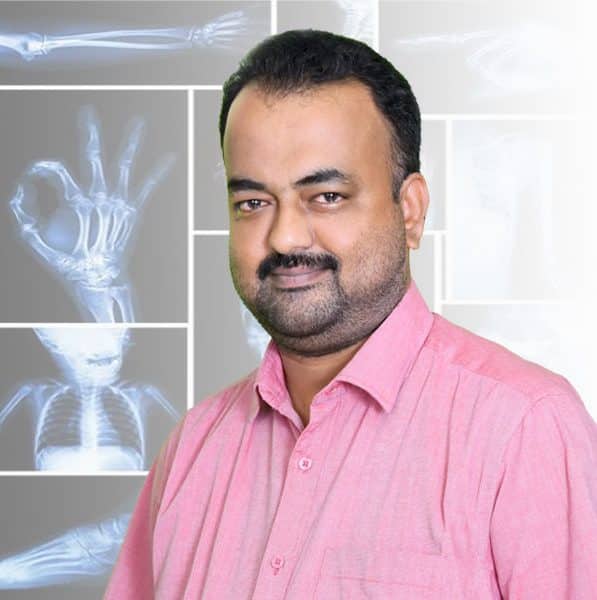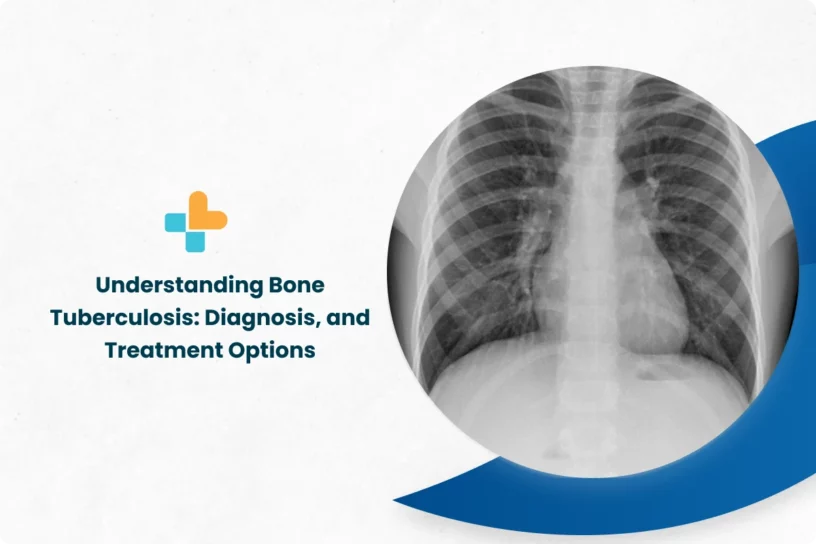Bone tuberculosis, also known as osteoarticular tuberculosis, is a rare but serious form of tuberculosis affecting bones and joints. The bacterium Mycobacterium tuberculosis causes it, the same bacteria that causes pulmonary tuberculosis. Bone tuberculosis is a serious condition that can lead to bone deformities, disability, and even death if left untreated.
In this blog, we will explore the symptoms, diagnosis, and treatment options for bone tuberculosis, so you can better understand this condition and know how to seek help if you or a loved one is affected by it.
What is The Primary Cause of Bone TB?
The primary cause of bone tuberculosis is infection with the bacterium Mycobacterium tuberculosis. This bacteria usually enter the body through the lungs and spreads to other body parts, including the bones and joints. Bone tuberculosis can also be caused by the spread of tuberculosis from other parts of the body to the bones and joints, such as in cases of spinal tuberculosis. In rare cases, bone tuberculosis can also be caused by infection with atypical mycobacteria or non-tuberculous mycobacteria.
What are The Different Types of TB?
There are several different types of tuberculosis (TB), which can affect different parts of the body. The most common type of TB is pulmonary tuberculosis, which affects the lungs. Other types of TB include
- Extrapulmonary tuberculosis:
This type of TB affects parts of the body outside of the lungs, such as the bones and joints, lymph nodes, kidneys, and brain.
- Miliary tuberculosis:
This is a rare and severe form of TB that can affect many organs in the body, including lungs, liver, and spleen.
- Latent tuberculosis infection:
This is a type of TB where the bacteria are present in the body, but the person has no symptoms and is not contagious. However, the infection can become active later in life if the immune system becomes weakened.
- Drug-resistant tuberculosis:
This is a type of TB that is resistant to one or more of the drugs used to treat it. Drug-resistant TB is more difficult to treat and requires longer treatment with more expensive medications.
It’s important to note that all types of TB are caused by the bacterium Mycobacterium tuberculosis.
Which Bone TB Tests Should You Consider?
If you suspect that you may have bone tuberculosis, there are several tests that your doctor may recommend to confirm the diagnosis. Some of the tests that may be used to diagnose bone tuberculosis include
- X-rays: X-rays can help identify changes in the bones that may indicate bone tuberculosis, such as bone destruction or deformities.
- CT scans or MRI scans: These imaging tests can provide more detailed images of the bones and joints, which can help identify areas of infection or damage.
- Biopsy: In some cases, a biopsy may be needed to confirm the presence of tuberculosis bacteria in bone tissue. During a biopsy, a small sample of bone tissue is taken and examined under a microscope.
- Tuberculin skin test: This test involves injecting a small amount of purified protein derivative (PPD) from the tuberculosis bacteria into the skin. If you have been exposed to the bacteria, your body will produce an immune response that can be detected through a skin reaction.
- Blood tests: Blood tests can be used to detect antibodies to the tuberculosis bacteria or to measure the level of inflammation in the body.
It’s important to note that a combination of these tests may be needed to confirm a diagnosis of bone tuberculosis. Your doctor will work with you to determine which tests are appropriate for your individual situation.
Also Read : Exercises to Bring Relief to Joint Pain
Conclusion
In conclusion, bone tuberculosis is a serious condition that can lead to bone deformities, disability, and even death if left untreated. It is important to be aware of the symptoms of bone tuberculosis and seek medical attention if you suspect that you may be affected. Your doctor can recommend tests to confirm the diagnosis and develop a treatment plan that is appropriate for your individual needs.
If you or a loved one is affected by bone tuberculosis, Ayu Health is a healthcare provider that can help. Ayu Health is committed to providing high-quality, affordable healthcare to patients with a variety of health conditions, including bone tuberculosis. Their team of experienced doctors and healthcare professionals can work with you to develop a personalized treatment plan that meets your unique needs.
Contact Ayu Health today to learn more about their services and how they can help you manage your bone tuberculosis.
Our Hospital Locations
Orthopaedics Surgery Hospitals in Chandigarh | Orthopaedics Surgery Hospitals in Bangalore | Orthopaedics Surgery Hospitals in Jaipur | Orthopaedics Surgery Hospitals in NCR | Orthopaedics Surgery Hospitals in Hyderabad
Our Doctors
Orthopaedics Surgery Doctors in Chandigarh | Orthopaedics Surgery Doctors in Bangalore | Orthopaedics Surgery Doctors in Jaipur | Orthopaedics Surgery Doctors in NCR | Orthopaedics Surgery Doctors in Hyderabad
About the Author

Dr. Manjunath Kumar K.
Dr. Manjunath Kumar K. is a renowned Orthopaedics currently practicing at Ayu Health, Bangalore.
He is an orthopedic surgeon currently practicing at Mallige Medical Center, Bangalore. A highly qualified doctor, he has completed his MBBS from Bangalore Medical College and MS in Orthopedics from KIMS, Hubli. further higher surgical training was from England, Birmingham. His post-graduate degree from the royal college of Edinburgh and the Royal College of Ireland. He also has vast experience in treating Unilateral Total Knee Replacement, Bilateral Total, Knee Replacement, Total Hip Replacement Surgery, and ACL Tear




